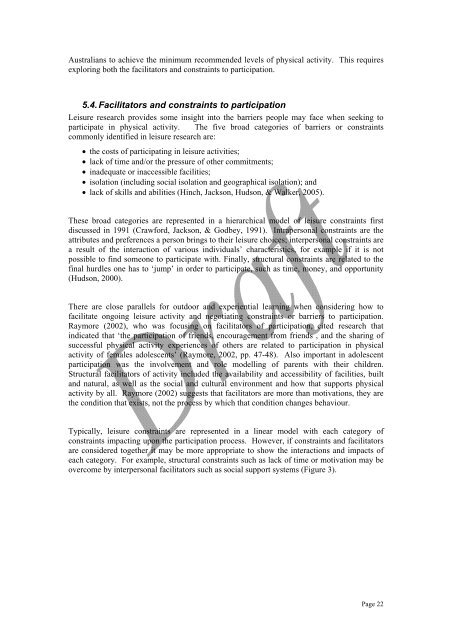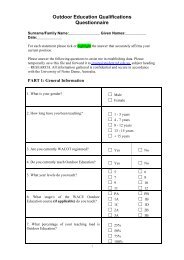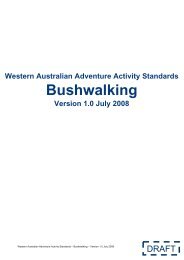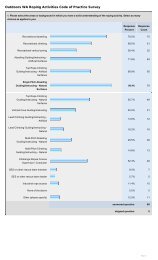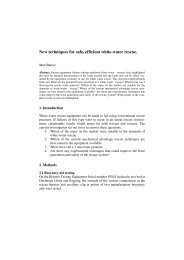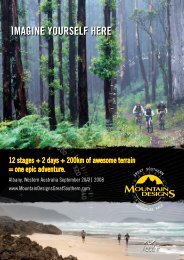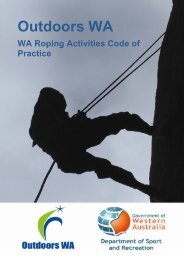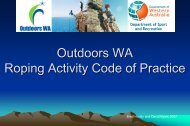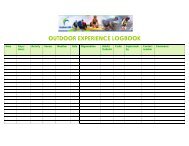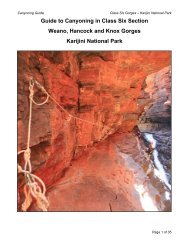Outdoor Adventure Activities Benefits Catalogue - Outdoors WA
Outdoor Adventure Activities Benefits Catalogue - Outdoors WA
Outdoor Adventure Activities Benefits Catalogue - Outdoors WA
Create successful ePaper yourself
Turn your PDF publications into a flip-book with our unique Google optimized e-Paper software.
Australians to achieve the minimum recommended levels of physical activity. This requiresexploring both the facilitators and constraints to participation.5.4. Facilitators and constraints to participationLeisure research provides some insight into the barriers people may face when seeking toparticipate in physical activity. The five broad categories of barriers or constraintscommonly identified in leisure research are:• the costs of participating in leisure activities;• lack of time and/or the pressure of other commitments;• inadequate or inaccessible facilities;• isolation (including social isolation and geographical isolation); and• lack of skills and abilities (Hinch, Jackson, Hudson, & Walker, 2005).These broad categories are represented in a hierarchical model of leisure constraints firstdiscussed in 1991 (Crawford, Jackson, & Godbey, 1991). Intrapersonal constraints are theattributes and preferences a person brings to their leisure choices; interpersonal constraints area result of the interaction of various individuals’ characteristics, for example if it is notpossible to find someone to participate with. Finally, structural constraints are related to thefinal hurdles one has to ‘jump’ in order to participate, such as time, money, and opportunity(Hudson, 2000).There are close parallels for outdoor and experiential learning when considering how tofacilitate ongoing leisure activity and negotiating constraints or barriers to participation.Raymore (2002), who was focusing on facilitators of participation, cited research thatindicated that ‘the participation of friends, encouragement from friends , and the sharing ofsuccessful physical activity experiences of others are related to participation in physicalactivity of females adolescents’ (Raymore, 2002, pp. 47-48). Also important in adolescentparticipation was the involvement and role modelling of parents with their children.Structural facilitators of activity included the availability and accessibility of facilities, builtand natural, as well as the social and cultural environment and how that supports physicalactivity by all. Raymore (2002) suggests that facilitators are more than motivations, they arethe condition that exists, not the process by which that condition changes behaviour.Typically, leisure constraints are represented in a linear model with each category ofconstraints impacting upon the participation process. However, if constraints and facilitatorsare considered together it may be more appropriate to show the interactions and impacts ofeach category. For example, structural constraints such as lack of time or motivation may beovercome by interpersonal facilitators such as social support systems (Figure 3).Page 22


